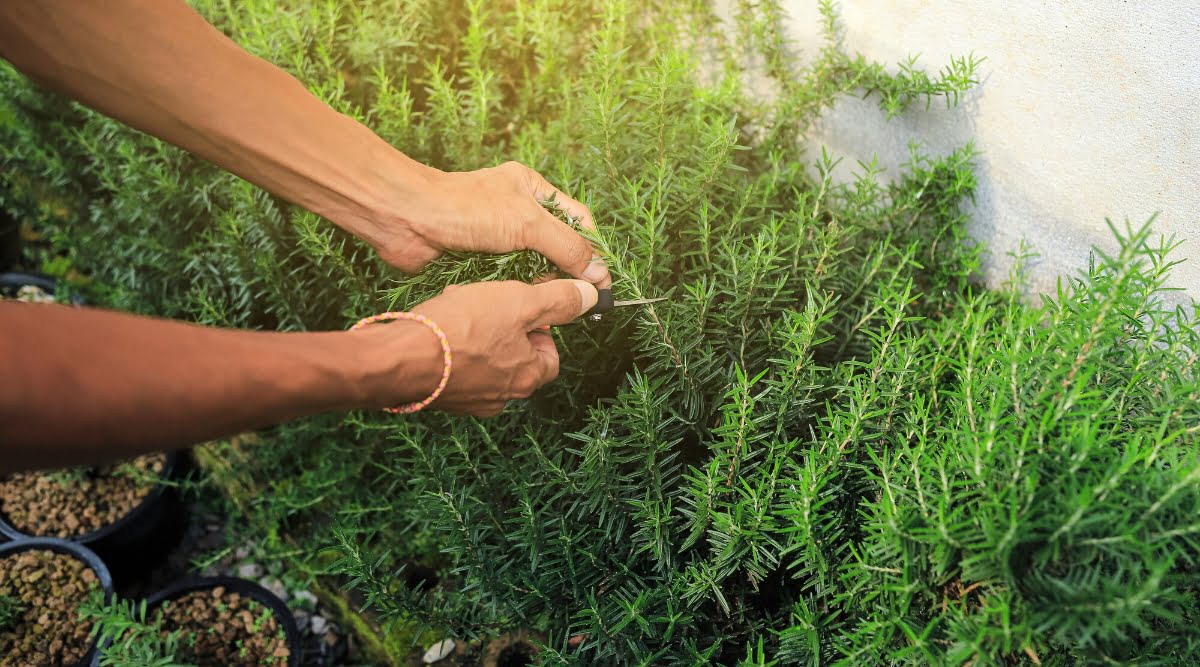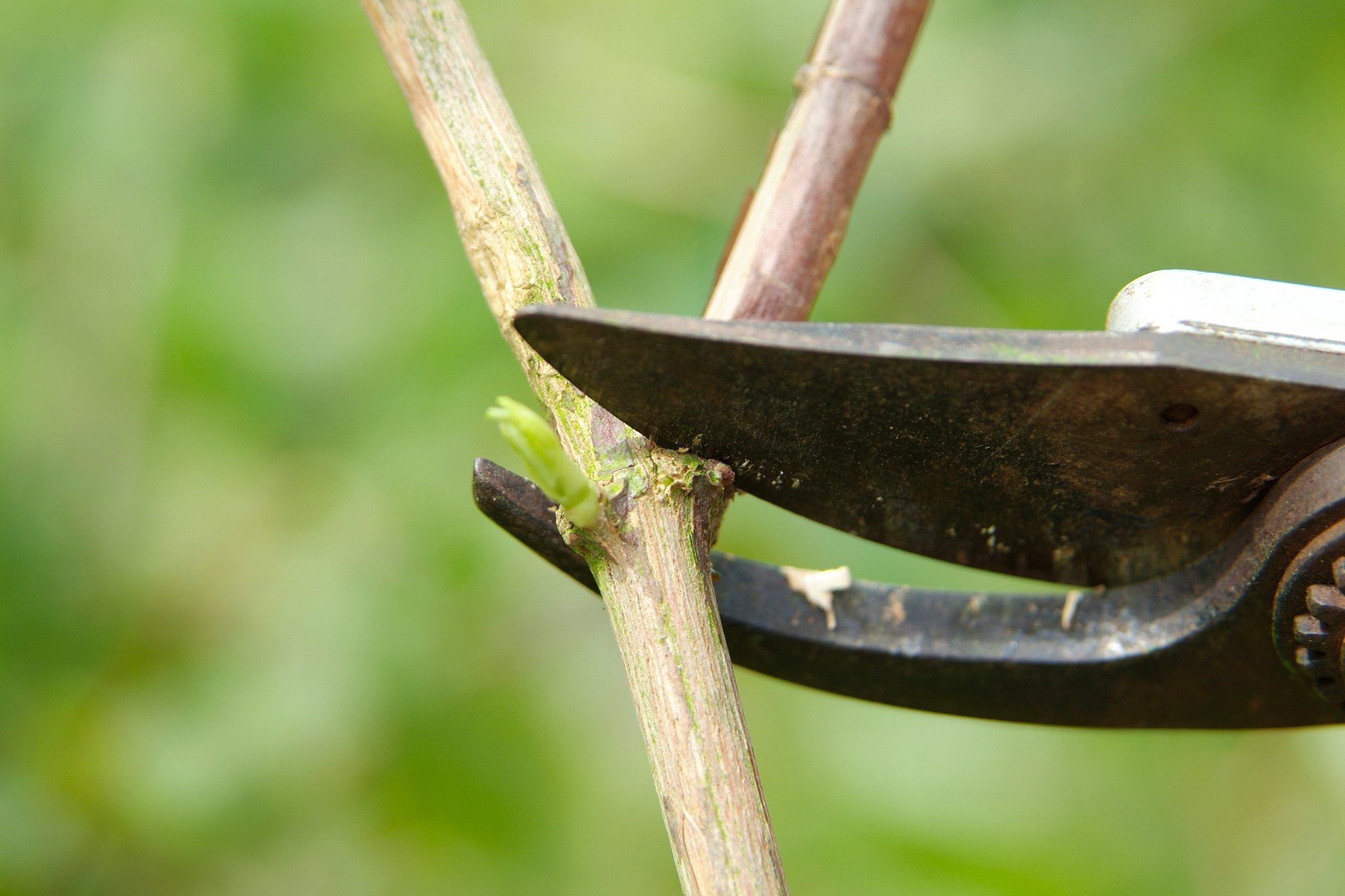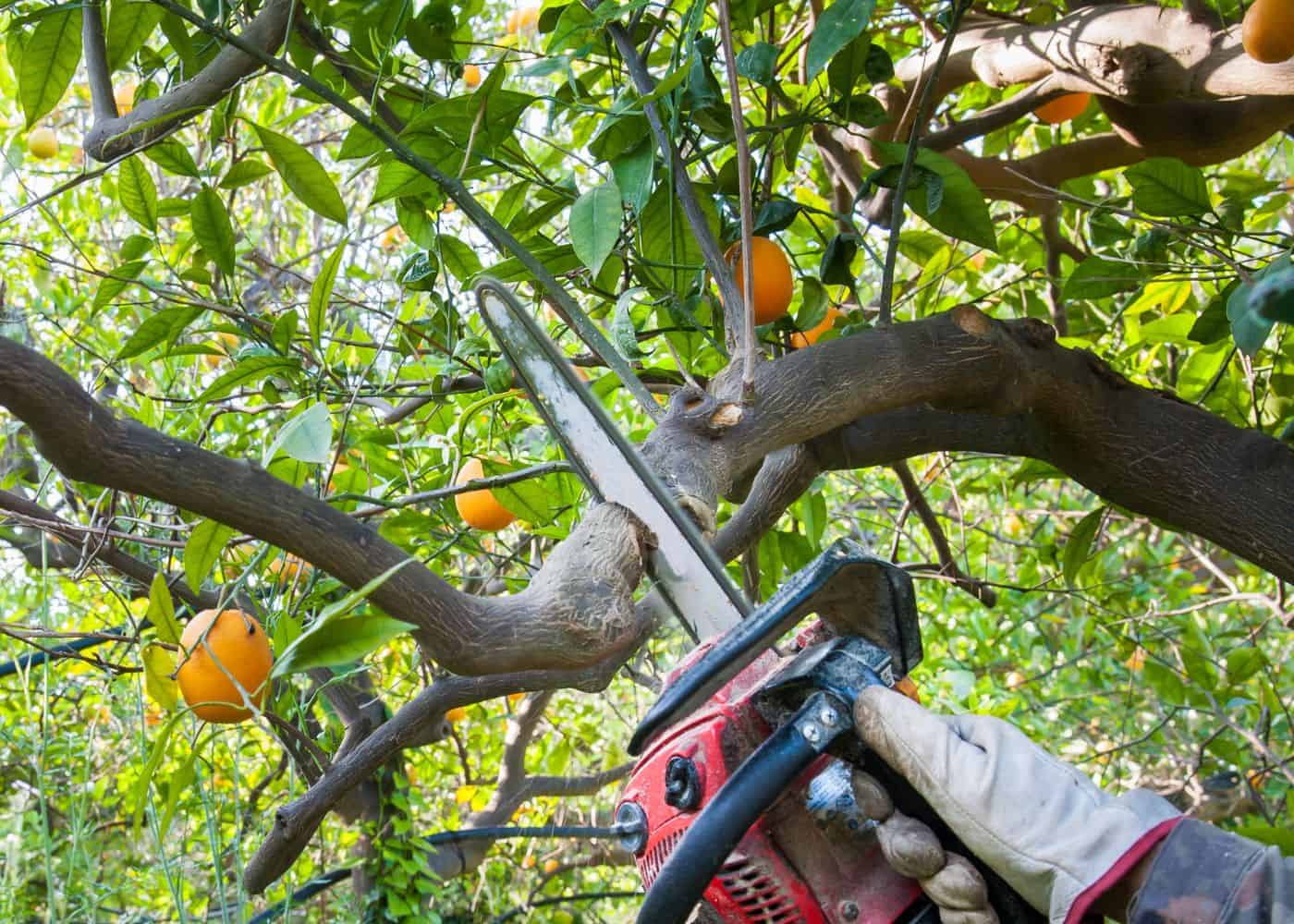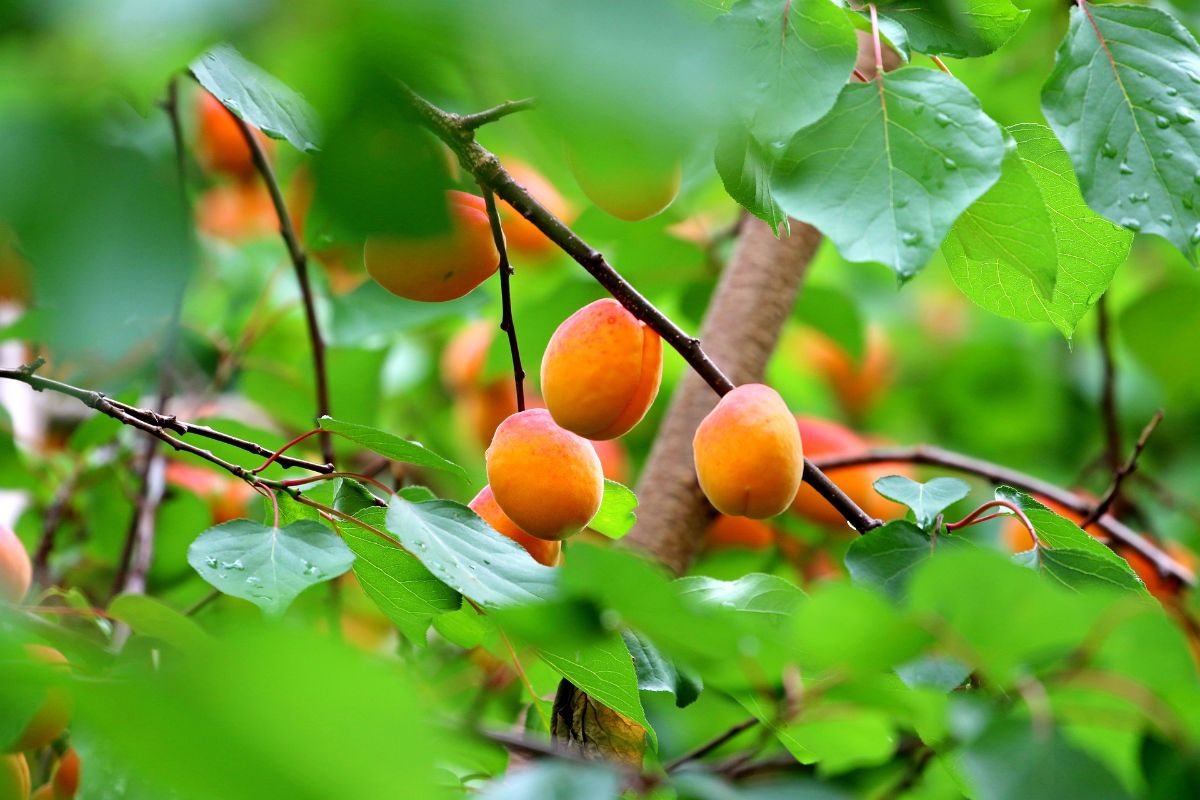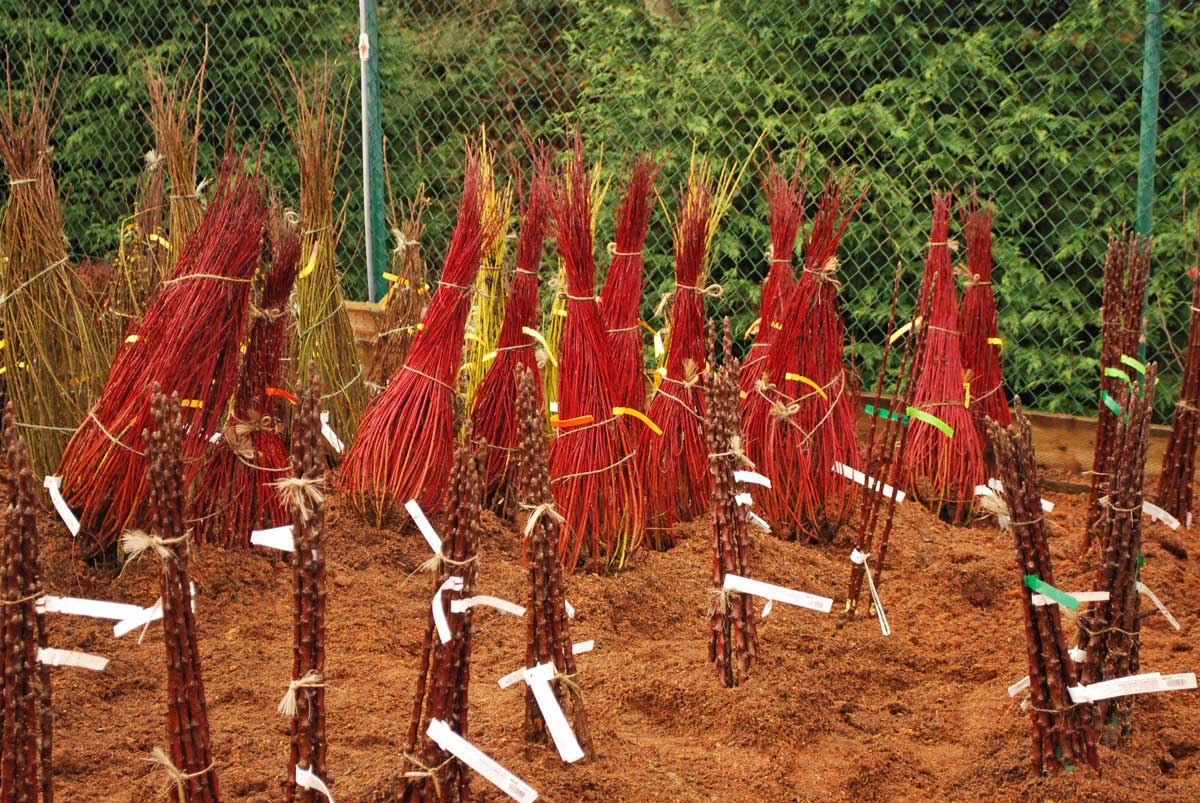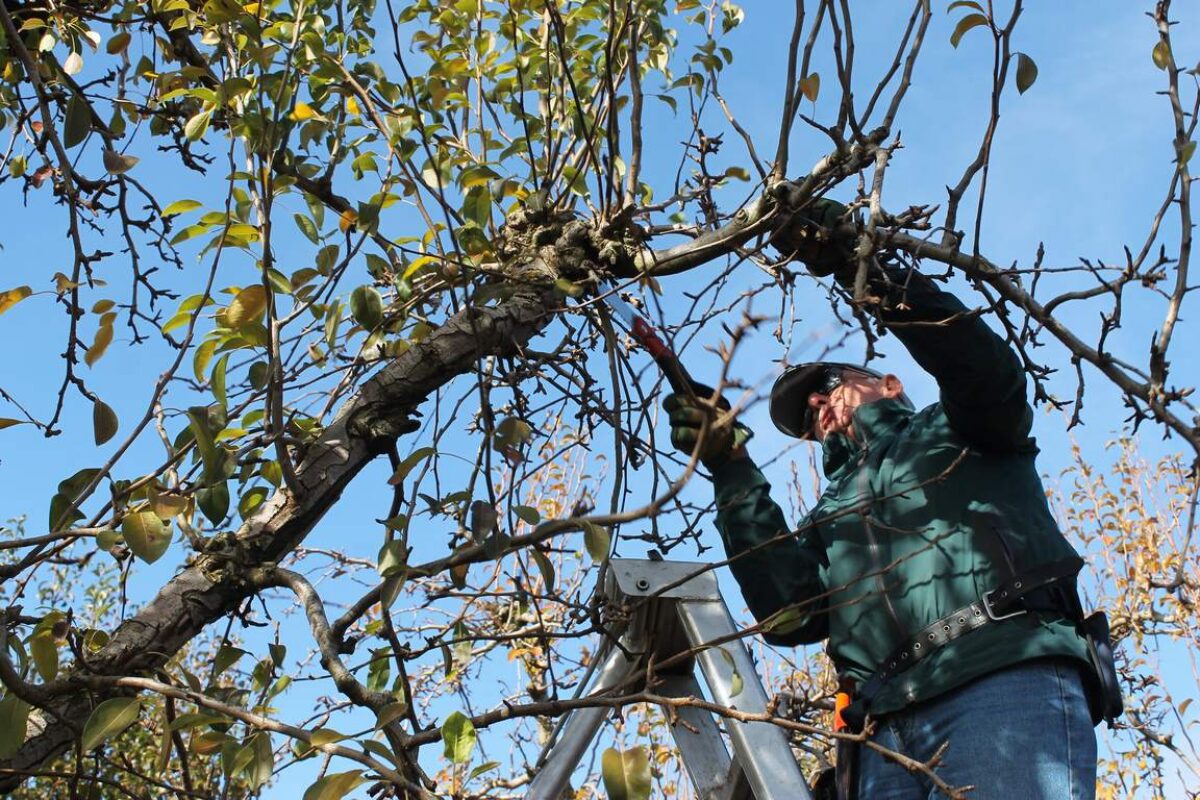Home>Types of Gardening>Ornamental Gardening>When To Prune Bonsai Roots


Ornamental Gardening
When To Prune Bonsai Roots
Modified: February 9, 2024
Discover the best times to prune bonsai roots in your ornamental gardening routine. Expert tips and advice for maintaining healthy and thriving bonsai trees.
(Many of the links in this article redirect to a specific reviewed product. Your purchase of these products through affiliate links helps to generate commission for Chicagolandgardening.com, at no extra cost. Learn more)
Table of Contents
Introduction
Welcome to the world of ornamental gardening! If you’re a gardening enthusiast, you’ve likely come across the captivating art of bonsai. Bonsai, with its delicate miniature trees, offers a unique and awe-inspiring experience. However, to maintain the beauty and health of these miniature masterpieces, it is crucial to understand and care for their roots.
The roots of a bonsai tree play a vital role in its overall health and aesthetics. Just like any other plant, the roots of a bonsai tree provide essential nutrients and water to support its growth. But unlike regular potted plants, bonsai trees have limited space to grow. This constrained environment necessitates periodic root pruning to ensure the tree’s long-term health and overall appearance.
In this article, we will delve into the fascinating world of bonsai root pruning. We will discuss the signs that indicate when roots need to be pruned, the best time to carry out this task, and the step-by-step process involved in pruning bonsai roots. Furthermore, we will explore the necessary tools and techniques required for successful root pruning and provide tips for aftercare and root recovery.
Whether you’re a seasoned gardener or just starting in the world of bonsai, this article will equip you with the knowledge and skills to properly prune your bonsai roots. So, let’s dive in and discover the art of bonsai root pruning, ensuring your miniature trees remain vibrant and healthy for years to come.
Understanding Bonsai Roots
Before we delve into the intricacies of pruning bonsai roots, it’s essential to understand the unique characteristics of these miniature trees’ root systems.
Bonsai roots differ from those of regular plants, as they are carefully trained and pruned to maintain a harmonious balance between the tree’s overall size and the space available in its pot. The root system of a bonsai is shallow and compact, designed to fit within the confines of its container.
One crucial aspect of bonsai root development is surface root prominence. Bonsai artists often aim to create an attractive nebari, which refers to the surface roots radiating harmoniously from the trunk. These surface roots not only enhance the aesthetic appeal of the tree but also provide stability and anchorage.
However, the limited space for root growth in bonsai pots can lead to a congested root system. This congestion can cause various issues, including nutrient deficiencies, reduced water uptake, and decreased overall tree vitality. To combat these issues, root pruning becomes an essential practice for maintaining the health and longevity of bonsai trees.
Root pruning involves selectively cutting and removing specific roots to prevent them from becoming overcrowded and compacted. By strategically pruning the roots, we can stimulate new growth and allow for optimal nutrient absorption and water circulation within the tree. Proper root pruning also helps maintain the desired shape and proportions of the bonsai, ensuring its artistic integrity.
Understanding the unique characteristics of bonsai roots is fundamental in determining when and how to perform root pruning. In the next sections, we will explore the signs that indicate when root pruning is necessary and the ideal time to carry out this task.
Signs that Roots Need Pruning
Pruning bonsai roots is not something that should be done on a whim. It is essential to assess the tree’s overall health and observe signs indicating whether root pruning is necessary. Here are some common indicators that roots may need pruning:
- Pot-bound Roots: One of the most obvious signs that roots need pruning is if they are tightly packed and circling around the bottom of the pot. This pot-bound condition restricts the roots from spreading out and absorbing nutrients properly.
- Slow or Stunted Growth: If you notice that your bonsai tree’s growth has slowed down significantly or stagnated, it may be an indication that the roots are becoming congested and need pruning.
- Yellowing or Wilting Leaves: When the root system becomes overcrowded or doesn’t have enough room to absorb water and nutrients efficiently, the leaves of the bonsai tree may start to turn yellow or wilt.
- Poor Soil Drainage: If you notice that water is not draining properly from the pot or the soil remains consistently damp, it could be a sign that the roots are compacted and need to be pruned to improve drainage.
- Roots Growing Above Soil Level: In some cases, roots may start protruding above the soil surface due to overcrowding. This is a clear sign that the roots have outgrown their container and need pruning.
It is important to be attentive to these signs and address them promptly to prevent further harm to the tree. Regularly inspecting the roots and monitoring the tree’s growth can help you identify when root pruning is necessary. By keeping a close eye on your bonsai tree, you can ensure its overall health and vitality.
Best Time to Prune Bonsai Roots
The timing of root pruning plays a crucial role in the success and health of your bonsai tree. It is essential to prune the roots at the right time to minimize stress and maximize recovery. Here are some guidelines on the best time to prune bonsai roots:
Dormant Season: The ideal time to prune bonsai roots is during the tree’s dormant season, typically in late winter or early spring before the onset of new growth. During this time, the tree is less active, which reduces the risk of transplant shock and allows the roots to heal and regenerate more effectively.
Avoiding Extreme Temperatures: It is crucial to avoid root pruning during periods of extreme heat or cold. Pruning roots when temperatures are too high can lead to excessive moisture loss and stress, while pruning during freezing temperatures can damage the delicate root tissues. Opt for mild weather conditions, when the temperature is moderate and stable.
After Flowering/Fruit Set: For specific species of bonsai trees that bloom or bear fruit, it is recommended to wait until after the flowering or fruiting period before pruning the roots. This allows the tree to fully utilize the energy for flower or fruit production and reduce the risk of interrupting the growth cycle.
Consider the Bonsai’s Health: If your bonsai tree is showing signs of stress or illness, such as yellowing leaves or poor growth, it is advisable to postpone root pruning until the tree has regained its strength. Pruning roots when the tree is already weakened can further compromise its health and recovery.
By pruning bonsai roots at the right time, you can ensure minimal disruption to the tree’s growth and help it recover quickly. Planning and scheduling root pruning during the bonsai’s dormant season and considering the tree’s overall health are key factors in determining the best time to prune.
Steps for Pruning Bonsai Roots
Pruning bonsai roots requires a delicate touch and attention to detail to ensure the tree’s health and aesthetic appeal. Here are the essential steps to follow when pruning bonsai roots:
- Prepare the bonsai tree: Begin by removing the tree from its pot and gently loosening the soil around the root ball. Carefully inspect the roots for any signs of damage, disease, or overcrowding.
- Identify the roots to be pruned: With bonsai root pruning, it’s important to be selective and strategic in what roots to prune. Look for circling or crossing roots, large thick roots that are out of proportion with the tree, or any damaged or diseased roots that need to be removed.
- Trim the roots: Using a sharp, clean bonsai root pruning tool, carefully trim the identified roots. Make clean, angled cuts, avoiding any jagged or torn edges. Be mindful not to remove too much root mass, as it can put stress on the tree. Aim to remove about 20-30% of the root mass during each pruning session.
- Prune root tips: Along with trimming the larger roots, it’s important to prune the fine root tips. These fine roots tend to become excessively dense and need to be pruned back to encourage new growth and prevent root circling.
- Reposition the tree: After pruning the roots, reposition the tree within the pot, ensuring it is centered and balanced. Fill in the gaps with fresh, well-draining bonsai soil, gently firming it around the roots.
- Water and provide aftercare: Once the tree is repotted, thoroughly water it to settle the soil around the roots. Place the bonsai in a shaded area for a few weeks to allow the roots to recover. Monitor the tree closely, ensuring adequate watering and providing the right light and temperature conditions for its specific species.
Remember, each bonsai tree is unique, and the pruning requirements may vary. Always consider the specific needs of your bonsai and adjust the pruning process accordingly. With proper pruning techniques and diligent aftercare, your bonsai tree will thrive and continue to enchant with its miniature beauty.
Tools Required for Pruning Bonsai Roots
Pruning bonsai roots requires the use of specialized tools designed to make precise and clean cuts without causing damage to the tree. Here are some essential tools you will need for pruning bonsai roots:
- Bonsai Root Shears: These are specially designed shears with sharp, curved blades that allow for precise cutting of roots close to the trunk or main root system. The curved shape helps to avoid damaging nearby roots while making clean cuts.
- Bonsai Root Hook: A root hook is a small metal tool with a hooked end, used for gently untangling and combing the roots during preparation for root pruning. It helps to separate and loosen the densely packed roots without causing harm.
- Bonsai Knob Cutter: A knob cutter is a pruning tool with a concave blade, primarily used for removing larger roots or thick sections of roots. The concave shape ensures a smooth and clean cut, minimizing damage to the surrounding root tissue.
- Bonsai Tweezers: Tweezers are useful for gently teasing out and removing fine root tips during pruning. They allow for careful precision when working on intricate areas of the root system.
- Bonsai Rake: A small rake with long, narrow teeth is helpful for removing excess soil from the root ball during repotting and for gently combing through the roots to remove any debris or tangles.
- Bonsai Wire Cutters: While not directly used for root pruning, wire cutters are essential for removing any wires that may be binding the roots or restricting their growth. Carefully and slowly remove the wire to avoid damaging the roots.
When using these tools, it is crucial to keep them clean and sharp. Clean them with alcohol or disinfectant before and after each use to prevent the spread of diseases. Additionally, regularly sharpening the tools ensures clean and efficient cuts, minimizing stress on the tree.
Having the right tools in your bonsai toolkit will make the root pruning process easier and more effective. Invest in high-quality tools and take the time to learn how to use them correctly for the best results in maintaining the health and balance of your bonsai tree’s root system.
Aftercare and Recovery for Pruned Bonsai Roots
After the crucial process of pruning bonsai roots, proper aftercare is essential to ensure the tree’s recovery and long-term health. Here are some important steps to follow for aftercare and recovery:
- Watering: Immediately after root pruning, provide the tree with sufficient water to settle the soil around the roots. Ensure that the water penetrates evenly throughout the pot, promoting root rehydration and minimizing transplant shock. Adjust the watering frequency as needed based on the tree species and environmental conditions.
- Placement: Place the bonsai in a shaded area for a few weeks to protect it from excessive sunlight and heat. This helps reduce stress on the tree and allows the roots to recover without additional strain.
- Humidity: Bonsai trees generally prefer a slightly higher humidity level. You can create a humid environment by placing the bonsai on a humidity tray filled with water or misting the foliage regularly. This helps mitigate moisture loss and aids in root recovery.
- Fertilization: Avoid fertilizing immediately after root pruning, as the tree’s root system needs time to recover and reestablish. Wait until new growth begins to appear and the tree has fully recovered before resuming a regular fertilizer schedule.
- Monitor and Prune New Growth: Keep a close eye on the bonsai tree, watching for new growth and potential issues. As the tree begins to recover, new shoots and roots will start to develop. Regularly monitor the growth and prune any excessive or unwanted shoots to maintain the desired shape and proportions of the bonsai.
Patience and observation are essential during the aftercare and recovery phase. It may take several weeks or even months for the tree to fully bounce back and resume healthy growth. Monitor the overall health of the bonsai, looking for signs of stress or complications, and make adjustments as needed.
Remember, each bonsai tree is unique, and the recovery process may vary. Understanding your specific tree’s needs and providing the right aftercare will help foster a successful recovery and promote the continued beauty and vitality of your bonsai.
Conclusion
Pruning bonsai roots is a critical aspect of maintaining the health, balance, and aesthetic appeal of these miniature trees. By understanding the unique characteristics of bonsai roots and recognizing the signs that indicate the need for pruning, you can ensure the long-term vitality of your bonsai.
Knowing the best time to prune bonsai roots, such as during the dormant season and avoiding extreme temperatures, is crucial for the tree’s successful recovery. Following the proper steps for root pruning, using the right tools, and providing adequate aftercare will help minimize stress and promote healthy growth.
Remember that each bonsai tree is unique, and the pruning requirements may vary. It’s important to assess the specific needs of your bonsai and make adjustments accordingly. Regular monitoring, observation, and adjustments to watering, placement, humidity, and fertilizer will help ensure your bonsai’s continued health and beauty.
By embracing the art of bonsai root pruning, you become a steward of these magnificent miniature trees, shaping them to reflect your artistic vision while fostering their overall well-being. With patience, practice, and a love for the craft, you can create and care for bonsai trees that captivate and inspire for generations to come.

